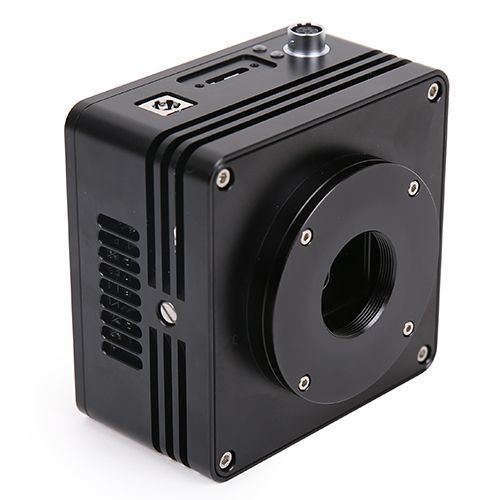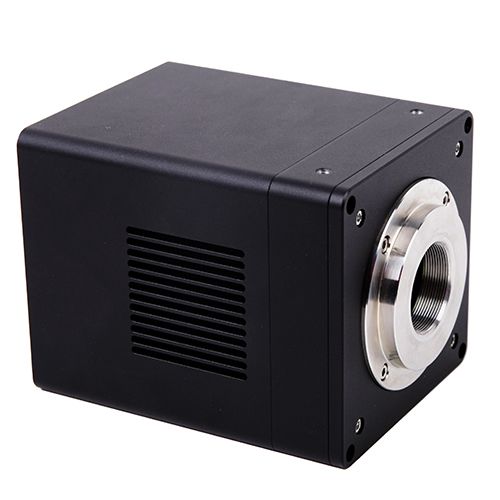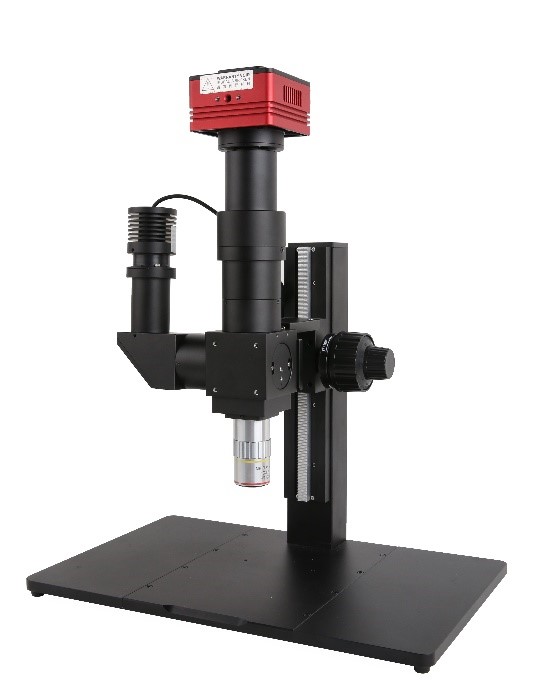
EHD SWIR Microscope 900-1700nm range
The evolution of CMOS sensor technology, driven by demand for compact, high-performance imaging systems under strict size and power constraints, has enabled significant advancements in digital microscopy. Short-wave infrared (SWIR) modular microscopes, exemplified by systems like the EHD SWIR microscope, now provide transformative capabilities for industrial and scientific applications by extending imaging beyond the traditional visible spectrum (400–700 nm) into the 900–1700 nm range.
SWIR modular microscopy bridges the gap between conventional optical systems and specialized IR imaging, offering unparalleled precision for next-generation material and electronic inspection.
SWIR modular microscopes are critical in:
1. Semiconductor Manufacturing: Detecting subsurface defects in silicon wafers and chip interconnects.
2. Materials Science: Identifying invisible cracks in ceramics or composite materials.
3. Industrial Inspection: Analyzing subsurface structures in components without destructive disassembly
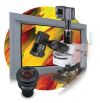
Video Coupler Olympus, Leica, Nikon, Zeiss, Huviz, Labomed
Today more than ever, video microscopy is an excellent means of maximizing your research productivity and effectiveness. EHD’s ever-expanding line of video couplers offers a myriad of models, magnifications and mounts to ensure you of the optimal imaging for your application. Whether you are capturing microscopic imagery for comparison, instruction, analysis, or archiving… EHD couplers are your clear connection to video microscopy.
Olympus, Leica, Nikon and Zeiss TV Adapter up to 2.7″ sensor size with M52 Mount, 1.8″ with T2-Mount, and C-Mount for smaller sensor format.
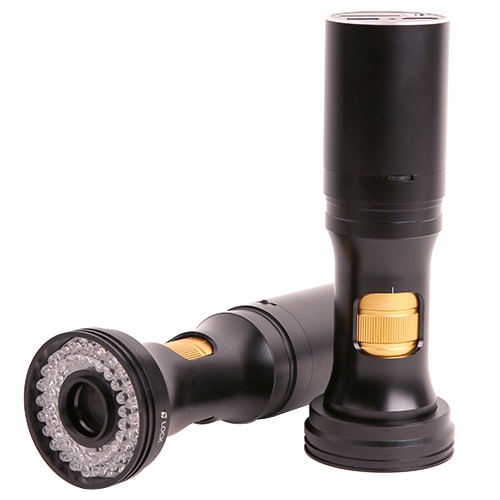
EHD-ZM0756 All-in-One Video Microscope
EHD-ZM0756 series all-in-one zoom monocular USB digital microscope is shown in Figure. It has 8x continuous zoom lens EHD-ZM0756-W100-TV050, USB Camera module with different resolution and LED ring light source EHD-TZM0756DRL-NPC.。
The USB Camera module can directly complete the video and image acquisition with a computer, and the LED ring light source module is directly connected to the USB Camera module through the main body of the optical continuous zoom lens with no need of the external power supply.
ZM0756U series meets the digital imaging observation, inspection and measurement in the fields of modern electronic equipment, semiconductor, laser, led, LCD, industrial on-line detection and biology.
The EHD-ZM0756 is also available with HDMI and/or WiFi interface.
